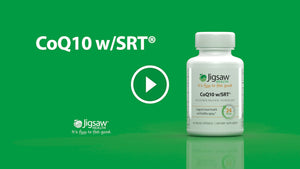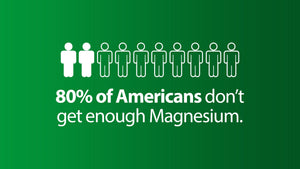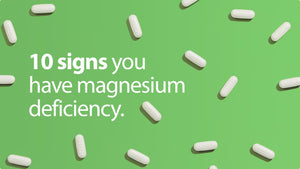by Donald W. Miller, Jr., MD
Although they afflict widely different age groups, autism and Alzheimers disease share a common cause: mercury. Dr. Boyd Haley, professor and chair of the chemistry department at the University of Kentucky, and Dr. Bernard Rimland, founder of the Autism Research Institute, presented evidence at this years Doctors for Disaster Preparedness meeting that connects mercury with these diseases.
This heavy metal is highly poisonous. A Dartmouth professor studying the chemical characteristics of an organic form of mercury dimethyl mercury spilled two drops of it on her gloved hand. The first sign of mercury poisoning occurred four months later when her speech began to be slurred. This was followed by difficulty walking and loss of vision. She then fell into a coma and died. Another person, attempting to smelt the silver in dental amalgams he obtained (they are 35 percent silver, 50 percent mercury, and 15 percent tin, zinc, and other metals), heated them in a frying pan. The mercury vapor thus generated killed him quickly. The two other family members in the house at the time also died.
Mercury is one proton (neutron and electron) heavier than gold the atomic number of gold is 79; mercury, 80. It is distributed throughout the earths crust. Unlike other metals, mercury, in its elemental state, is liquid (molten) at room temperature. And it releases a steady stream of gaseous mercury atoms that linger in the atmosphere for months (eventually falling back to earth and its oceans in an inorganic form in rain drops). Even when in a solid state, combined with other metals as an alloy, mercury atoms continually escape into the atmosphere. Once added to latex paint, put in teething powder, used in making hats, as a fungicide on seeds, as an antiseptic (Merthiolate), and as a treatment for syphilis (the cure was worse than the disease), human exposure to mercury today comes principally from three sources: dental amalgams, vaccines, and fish.
Elemental mercury when released by a dental amalgam is inhaled and (80 percent of it) absorbed by the lungs and retained in the body. Vaccine makers add thimerosal (which is half ethyl mercury) to vaccines to prevent bacterial contamination. This injected organic form of mercury is readily taken up by brain and heart muscle cells. Fish harbor another organic form of mercury methyl mercury, which is obtained from plankton that synthesize it from inorganic mercury extracted from the sea.
Currently the two most important sources of mercury exposure for Americans are dental amalgams and vaccinations. The Federal governments Centers for Disease Control and Prevention (CDC) and Food and Drug Administration (FDA), for reasons not explained, have chosen to ignore this fact. These agencies and the National Institutes of Health (NIH) focus exclusively on mercury in seafood, to the extent that the NIH will not fund studies that address mercury in amalgams and vaccines.
In lockstep with the government, the American Dental Association (ADA) claims that amalgams are safe, and the mercury in them poses no problem. The (government-funded) Institute of Medicine (IOM) and various specialty societies, notably the American Academy of Pediatrics (AAP), American Academy of Family Physicians (AAFP), and the American Medical Association (AMA), say the same thing about mercury in vaccines. There is growing evidence, however, that mercury in vaccines and amalgams cause both autism and Alzheimers disease. The CDC and the FDA and the medical establishment, led by its specialty societies, discount or ignore this evidence evidence that includes privately funded epidemiological studies; research on how mercury damages brain cells grown in culture; animal studies in rodents, sheep, and primates; and clinical studies in children and adults.
Autism was discovered in 1943, in American children, twelve years after ethyl mercury (thimerosal) was added to the pertussis vaccine. (The disease was not seen in Europe until the 1950s, after thimerosal was added to vaccines used there.) In a typical case, shortly before his 2nd birthday a normally developing, healthy boy stops communicating with others and withdraws into himself. He avoids eye contact and becomes strange and aloof. His vision becomes blurred; and he develops various motor disturbances, such as involuntary jerking of the arms and legs and walking on his toes. In addition to these manifestations, Dr. Sallie Bernard and her colleagues, in a study titled, "Autism: A Unique Type of Mercury Poisoning," describe the speech difficulties, unusual behavior (such as unprovoked crying spells and head banging), various degrees of cognitive impairment, gastrointestinal difficulties, and immune difficulties that these autistic children can have. Mercury is most likely a causative factor in other developmental disorders as well, such as delayed speech and attention deficit hyperactivity disorder.
Investigators have shown that there is a direct relationship between increasing doses of mercury in vaccines and autism. In the 1950s, with an immunization schedule limited to four vaccines (against diphtheria, tetanus, pertussis, and smallpox), 1 in 10,000 children developed this disease. As vaccines for other diseases were added, health care providers began injecting increasingly larger doses of mercury into children. Those born in 1981 were given 135 micrograms of mercury (on average), and one case of autism occurred in every 2,600 children born that year. With the addition of hepatitis B vaccine (injected on the day of birth) and one for Haemophilus influenzae Type b, providers injected 246 micrograms of mercury into children born in 1996. Autism occurred in one out of every 350 of these children. Today, providers follow an immunization schedule, prepared by the CDC and approved by the AAP and AAFP, that includes 13 vaccines given, with variable numbers of booster shots, 33 times before a child reaches the age of 2 (when the development of the brain is completed). Autism now afflicts 1 in 100 boys and 1 in 400 girls, and physicians diagnose 100,000 new cases of this disease every year in the U.S (using diagnostic criteria, in the DSM-IV, that is more restrictive than the previous DSM-IIIR). Over the last 30 years more than one million children have come down with this disease, and currently one in every 68 families in America has an autistic child.
Mainstream medical journals, like Pediatrics and The New England Journal of Medicine, only publish studies that claim thimerosal is safe. And it turns out that these articles are written in large part by researchers in the pay of vaccine makers, as the Coalition for Safe Minds (Sensible Action For Ending Mercury-Induced Neurological Disorders), a private nonprofit organization, has shown. Editors of these journals will not publish studies that show a link between thimerosal and autism like "Thimerosal in Childhood Vaccines, Neurodevelopment Disorders, and Heart Disease in the United States" by Mark and David Geier, which documents a strong association between the amounts of mercury injected in vaccines and autism. Such articles can only find acceptance in alternative (i.e., "politically incorrect") journals like the Journal of American Physicians and Surgeons, where this one was published.
The amount of damage a given dose of mercury can do to the brain (and also the heart) depends on ones age, sex, and genetically determined ability to excrete mercury. Young children with still developing brains are more susceptible, and males are more vulnerable to a given dose of mercury because testosterone enhances its neurotoxicity. Most important, however, is ones genetically programmed ability to rid the body of mercury. The brain has a house-cleaning protein that removes dangerous waste products, which comes in three varieties: APO-E2, APO-E3, and APO-E4. The APO-E2 protein can carry 2 atoms of mercury out of the brain; APO-3, one; and AOP-E4, none. The genes we acquire from each parent determine which two we have. People with two APO-E4 proteins (and thus no APO-E2 or -E3) have an 80 percent chance of acquiring Alzheimers disease. And according to one study, autistic children have a huge preponderance of APO-E4 protein in their brains.
Alzheimers disease was discovered in 1906, again in America, where dentists used mercury-laden amalgams to fill cavities (dentists in Europe largely avoided them). Today, more than 4 million Americans now have Alzheimers disease. It afflicts half of people over the age of 85 and 20 percent aged 75 to 84.
The first symptoms of this disease are difficulty concentrating and variable degrees of memory loss, leading ultimately to devastating mental deterioration. The brains of people with Alzheimers disease shrink by 25 percent and have distinct pathologic hallmarks (neurofibillary tangles, amyloid plaques, and phosphorylation of tau protein). Brain cells grown in the laboratory develop the same three pathologic findings when exposed to nanomolar (3.6 × 10-10 molar) doses of mercury, an amount approximating that found in the brains of people who have a lot of amalgam fillings.
Dental amalgams are the main source of mercury in an adults brain. An average-sized amalgam filling contains 750,000 micrograms of mercury and releases around 10 micrograms a day. Researchers put radiolabelled mercury amalgams in the teeth of sheep and determined where escaped mercury went with a scanner. They showed that mercury atoms exhaled through the nose travel up filaments of the olfactory nerve to the hippocampus, which controls memory, and to other critical areas in the brain. People with Alzheimers disease have mercury levels in their brains that are 2 to 3 times higher than that seen in normal people.
The mercury in flu vaccines also plays a role in this disease. One investigator has found that people who received the flu vaccine each year for 3 to 5 years had a ten-fold greater chance of developing Alzheimers disease than people who had zero, 1, or 2 shots.
Another important factor with regard to mercury on the mind, which officials at the CDC, FDA and the professors in the IOM do not consider, is synergistic toxicity mercurys enhanced effect when other poisons are present. A small dose of mercury that kills 1 in 100 rats and a dose of aluminum that will kill 1 in 100 rats, when combined have a striking effect: all the rats die. Doses of mercury that have a 1 percent mortality will have a 100 percent mortality rate if some aluminum is there. Vaccines contain aluminum.
Why do officials at the CDC, FDA, and leaders of the medical and dental establishment discount or ignore all these important facts? Some of them being in the pay of vaccine makers is one reason. The specter of litigation for having sanctioned thimerosal and amalgams and, in the case of the FDA, not doing appropriate safety studies on them is another. But it is more complicated than that. The hypothesis that mercury causes autism and Alzheimers disease is a new truth. And as Schopenhauer points out each new truth passes through three stages: First, it is ridiculed. Second, it is violently opposed. And third, it is accepted as self-evident. The mercury truth is now in the second stage.
In the 1790s Edward Jenner observed that milk maids did not have pock marks on their faces, like people did who had contracted and survived smallpox. Milking cows with cowpox rendered them immune to smallpox. He took fluid from the pustules of infected cows, injected it into children, and found that it protected them, when exposed, from contracting smallpox. The medical establishment of the day dismissed the idea of vaccinating people with cow pus as nonsense; and Sir Joseph Banks, president of the British Royal Society (the IOM of the day), told Jenner that he would ruin his reputation if he tried to publish these findings, which were so much at variance with established knowledge. When other doctors and informed individuals like Thomas Jefferson recognized that "vaccination" did indeed work, its value was, in time, accepted as self-evident. Jenners vaccine saved millions of lives and eradicated a disfiguring disease that has a 30 percent mortality rate. (But laboratories in the U.S. and U.S.S.R. preserved the virus that causes smallpox, and we now know that Soviet microbiologists grew vast quantities of it in chicken eggs for use as a biological weapon of mass destruction.)
Today the medical establishment, led by the AAP, AAFP, AMA, CDC, and IOM, has gone to the other extreme. The accepted wisdom now is that vaccines are a panacea. Health care providers start injecting them in infants on the day of birth, and government officials seek to have them made mandatory for all Americans. But some little-discussed facts belie their value. Deaths from diphtheria, for example, declined 90 percent from 1900 to 1930, due to better sanitation and nutrition, before there was a vaccine for this disease. Likewise, the death rate for measles declined 95 percent (13.3 to 0.03 deaths per 100,000 population) between 1915 and 1958, before the vaccine for measles vaccine was introduced in 1963. Viewed from a risk/benefit perspective, providers and government officials downplay the deleterious effects that vaccines can have on ones health and inflate their benefits. The top medical textbook on the subject is Vaccines, edited by Drs. Plotkin and Orenstein. In the 1999 3rd Edition that I reviewed (a slightly longer 4th Edition was published last year), its authors confine their discussion of mercury in vaccines to two short paragraphs in this 1,230-page book. They do not address concerns that have been raised about its neurotoxicity.
Vaccine manufacturers have started removing thimerosal from vaccines. And for the first time since the state began keeping records on this disease, California has had a decrease, of 6 percent, in the annual number of children over the age of 3 who have been diagnosed with autism. This occurred in children born in 2000, when the phase-out of thimerosal in vaccines began. Iowa has passed a law banning thimerosal in that state, and California has done the same thing for pregnant women and children under 3 (the bill awaits the governors signature). But pharmaceutical companies still add thimerosal in their Flu vaccines; and pediatricians are vaccinating children with their remaining supply of thimerosal-containing vaccines, which the FDA has chosen not to recall.
Taking mercury out of vaccines would substantially reduce the incidence of autism, but this alone will not eliminate the disease. Giving too many vaccines over too short a time to infants whose nervous system is not yet fully developed can also trigger autism and its spectrum of disorders. As Dr. Blaylock has shown (see Recommended Reading below), multiple vaccines given close together over-stimulate the brains immune system and, via the mechanism of "bystander injury," destroy brain cells.
Avoiding flu shots that contain thimerosal, and having dentists stop implanting mercury amalgams in peoples mouths would lower the incidence of Alzheimers disease. If you have amalgam fillings, particularly if there is a family history of Alzheimers disease, you might consider having them removed. Be sure to have a dentist do it who follows the protocol established by The International Academy of Oral Medicine & Toxicology for safely removing them.
September 29, 2004
Donald Miller (dwm@u.washington.edu) is a cardiac surgeon and Professor of Surgery at the University of Washington in Seattle and a member of Doctors for Disaster Preparedness. His web site is www.donaldmiller.com.
Used with permission 2005.






















